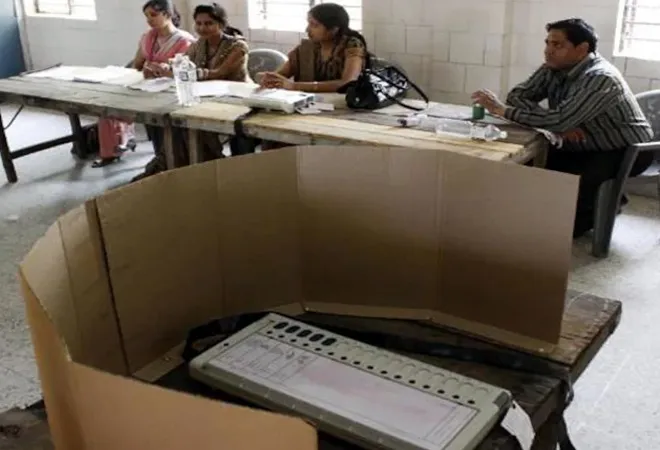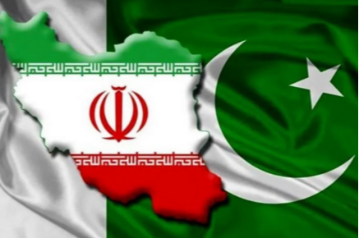
Those who have been closely observing the municipal elections in India have been troubled by the fact that the voter turnout for municipal elections has been consistently lower than parliamentary and state assembly elections. This trend was further confirmed by the recently held municipal elections in Delhi on 04 December 2022. According to released official data, the
overall turnout was 50.74 percent, while the affluent areas showed even greater disinterest, recording a turnout of under 40 percent. The lowest voting percentage was in south Delhi’s
Kasturba Nagar assembly constituency, where a mere 33.7 percent of voters stirred out of their homes to vote. This was in sharp contrast to the Delhi state assembly elections of 2020, which recorded a 62.59 percent
voter turnout, 11.85 percent higher than for electing local councillors. Similarly, in the 2019 Lok Sabha elections, 60.6 percent of all voters voted for the seven parliamentary seats in Delhi.
The lowest voting percentage was in south Delhi’s Kasturba Nagar assembly constituency, where a mere 33.7 percent of voters stirred out of their homes to vote.
The growing trend
The cited case of Delhi is not an exception. Lower voting for electing councillors to urban local bodies (ULBs) is a general trend in the country. Bengaluru, Chennai, Mumbai, and other Indian cities reveal the same pattern. The voting numbers in these cities were between 45 and 48 percent. While Kolkata had over 67 percent voting in the municipal elections, this needs to be looked at vis-à-vis West Bengal’s voter turnout for the 2021 assembly elections, which was much higher, at 82.3 percent. Based on the studies done by several scholars, one can safely conclude that Indian municipal elections evoke a lower response than national and state elections. Another fact is that
rural India has shown greater enthusiasm to vote than urban areas. Proclivity for municipal voting falls at the bottom of the voting ladder—rural, national, and state voting outdoing municipal voting.
This trend, however, is not peculiar to India. For instance, studies of municipal voting in the
US suggest that voter turnout in municipal elections may average half of the voting in national elections. In some cities, this falls below a quarter of the total voters, especially in an off-cycle election, but significantly rises when municipal elections are conducted along with presidential elections. For example, in
California, a 2014 study found that the average voter turnout in an off-cycle election was 35 percent lower than when city elections coincided with the presidential elections.
Regarding Mumbai civic elections, a
study conducted by the Gokhale Institute of Politics and Economics in 2016 had interesting revelations about the voters in that city. Mumbai voters displayed a low ‘Political Interest Quotient (PIQ)’ and ‘low-engagement levels’ for their local body. Furthermore, high-income and well-educated Mumbai voters who were residents of Mumbai for less than five years were ‘rare’ voters. Women were likely to vote less than men and the young were highly disinclined to go to their polling booths. The top reason that citizens assigned to their
disinterest was that their vote in the past had not made any difference to the way the municipal body functioned and the quality of services it delivered. Many found their names missing from the voters’ list. They also pointed out that the candidates who stood for elections were about the same in terms of quality. Besides, their ability to deliver any change was negligible. The study further revealed that four categories of voters fell in the rare or
intermittent voter category. These were women, those between the ages of 18 and 35, high-income groups and highly educated citizens.
Established democracies worldwide have been appalled by the steady loss of voting appetite among their citizens, recording a progressive decline in voter turnout.
In
2012, the voter turnout at Corporations like Mumbai and Thane could not exceed 45 percent. This was evidence of “low engagement of citizens in community affairs”. A more detailed analysis of ward-level data yielded damaging evidence about voter apathy. Some of the wards of Mumbai, Pune and Pimpri Chinchwad Municipal Corporations reported voter turnouts as low as 29 percent in 2012. This is further backed by studies showing that voter turnout in large cities such as Pune, Mumbai, Chennai, Kolkata, Hyderabad, and Delhi are historically lower than the medium-sized towns and rural areas.
What is significant to note is that several young democracies have witnessed huge enthusiasm to vote, recording as high as 80 percent turnout. On the other hand, established democracies worldwide have been appalled by the steady loss of voting appetite among their citizens, recording a progressive decline in voter turnout. It appears that the newfound enthusiasm among young democracies gives way to despondency because actual positive results do not reward their fervour.
While citizen disinterest in voting is a cause of worry for many democracies, and while voting in municipal elections may be low in several developed democracies, the Indian citizen’s disinterest in municipal voting may have added reasons. Urban local bodies in India are seriously disempowered. Financially, they are some of the weakest in the world. Their functions, finances, planning and overall administration are tightly controlled by the state, allowing little elbow room to municipalities. Thus, even if people voted for municipal elections, the impact that they would be able to effect on municipal policy and governance by holding municipal bodies to account would be minimal since municipalities themselves have little power to frame any significant local policy.
At the local level, the situation is made more complex by the proliferation of informal settlements in cities that primarily house the poor. As these settlements increase, the voters of such residential colonies become captive vote banks of certain politicians. Since they are persuaded to vote in large numbers against the voting apathy in formal settlements where the middle classes live, the citizens of the formal settlements get sidelined in the electoral process. This impacts the quality of municipal representatives and the governance vision that they could have brought to the table.
Academic research has consistently established that people who consume more news media have a greater probability of being politically engaged.
Significance of voting
Despite these ground realities, the
significance of local voting deserves encouragement. Municipal elections are the primary level where citizens learn about political activity, debate, policy formulation, and decision-making. Because of the political arena’s proximity, citizen’s participation is easy, offering quick lessons to those willing to learn and acquire democratic skills. The foundations here allow individuals aspiring for a political career to move up the ladder to state- and national-level politics.
It is, therefore, necessary to find ways to see that local communities remain vibrant citizens and eager voters at the municipal level. Such measures call for, above all, the financial, functional, and decision-making empowerment of local bodies. At the same time, there is a need to devise ways to get citizens to vote in municipal elections. Some countries, such as Belgium and Australia, have introduced laws that mandate compulsory voting by citizens. While that is an option that countries need to consider, there are less stringent ways that could also yield encouraging results. Academic research has consistently established that people who consume more news media have a greater probability of being
politically engaged. More local news on local activities, initiatives, and innovation ought to reach citizens could raise their interest in municipal affairs and trigger such engagement. The middle classes could be helped by the greater use of digitisation tools, both for registering as voters and online voting. These are significant areas that can push up the propensity to vote. Indeed, all steps that can rekindle interest in exercising their franchise are critical for consolidating democracies.
The views expressed above belong to the author(s). ORF research and analyses now available on Telegram! Click here to access our curated content — blogs, longforms and interviews.



 Those who have been closely observing the municipal elections in India have been troubled by the fact that the voter turnout for municipal elections has been consistently lower than parliamentary and state assembly elections. This trend was further confirmed by the recently held municipal elections in Delhi on 04 December 2022. According to released official data, the
Those who have been closely observing the municipal elections in India have been troubled by the fact that the voter turnout for municipal elections has been consistently lower than parliamentary and state assembly elections. This trend was further confirmed by the recently held municipal elections in Delhi on 04 December 2022. According to released official data, the  PREV
PREV


